|
antifascism
Anarchist Resistance in Milan
Text and photo by Andrea Perin and Dino Taddei
The history books will write the winners.
|
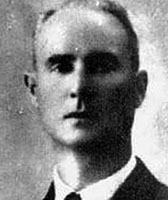 |
|
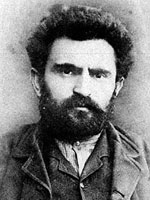 |
Pietro Bruzzi |
|
Errico Malatesta |
The memory of a city, otherwise, is carved by its ruling class in the plates of streets and squares, especially amid the gravestones and monuments: testimonies institutional memory, filtered and approved by those in power.
Milan, though it is "gold medal" of the Resistance, in recent years has seen the dust of forgetfulness rest increasingly on its plates and its monuments, methodically and obstinately snubbed by the new center-right ruling class, often characterized by a declared fascist nostalgia. But the memory petty, popular, has become increasingly diluted into keeping alive the only secular ceremony on April 25, with all the superficiality that often characterizes every ritual.
Neither the plate nor the official memory has never ever been taken into account the contribution of the anarchists in the Resistance, as if it never existed, so as not to be regarded even by the most popular memory: it is not uncommon, even in "left" environments, feel to deny the participation of anarchists in the struggle.
Nobody wants to fill these gaps with other carved stones, chasing the same dynamics of power, but the memory is a precious commodity and knowledge of the history of their city is an experience to grow.
Knowing the events and tie them to the places where they occurred helps make these events less abstract and far away, it brings them a physicality that is connected to our daily lives, and the sites themselves may be less anonymous, assume a role that was first crushed by life .
The city has changed a lot in the almost seventy years of history, but in this sequence of photos and comments, drawn from a club-organized event in Milan at Scighera places dedicated to the Resistance, you can learn about some of the places that saw the anarchists struggle of the Nazi-fascist. In order not to cross the city and ignore what came before us..
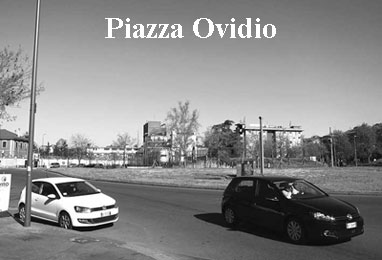 |
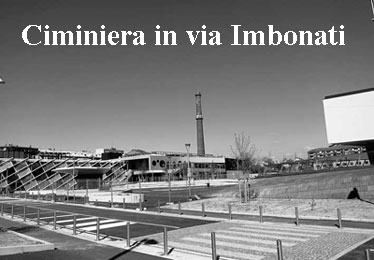 |
Piazza Ovidio
Osvaldo Brioschi makes the first significant action of the
resistance in Milan: October 1, 1943 blew up an
ammunition dump of a anti-aircraft battery stationed on
the edge of the square. Brioschi is the myth of the
constituent Bruzzi-Malatesta. Worker in the Caproni
factory, participated in the armed defense of the factory
in the days following the armistice, disarmed and sent
away naked a German soldier at the plant Montecatini
after the action moved to Valcuvia Ovidio Square where
he took part in the battle of Mount St. Martin in the shot
which fell November 18, 1943. |
Chimney on via Imbonati
What remains of the pharmaceutical 'Carlo Erba',
strategic logistics base for training anarchist. It was a
constant source of media and materials, in particular the
use of chemicals to make explosives. The same plant
manager Franco Valsecchi entered the anarchist
formations (as fearing for the integrity of the system for
the ideological implications of this choice). At the
approach of the uprising, workers prepare a table for
2000 people and 200 injured to a illegal hospital. The
chemists of the grass began to produce poison gas to
defend the plant against Germans attack. |
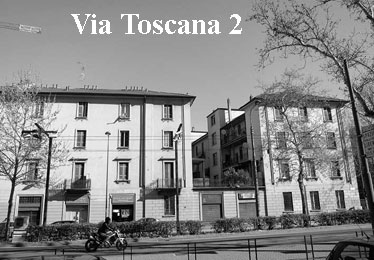 |
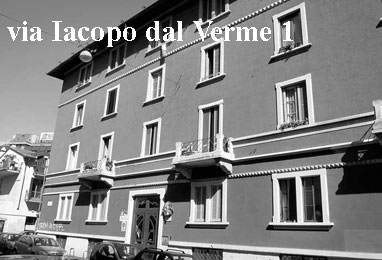 |
Via Toscana 2
Inside the building there was the brothers' workshop
Gorge, where, since 1934 Antonio Pietropaolo (future
commander of the II Malatesta), finished his probation,
he found work. During the resistance, became the site
of clandestine meetings, weapons cache and clearing of
the deserters. |
Via Jacopo dal Verme 1
Giampietro Rossi, the son of the concierge, made
available the cellar of the building to install a laboratory
for the manufacture of explosives. Raw materials came in
large quantities by 'Carlo Erba' to such an extent that
was possible to meet the needs of other partisan
groups. |
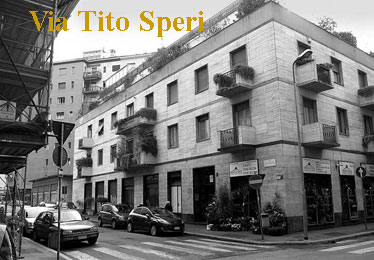 |
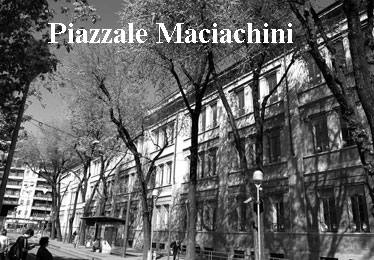 |
Via Tito Speri
This was based on a barracks of the X MAS, on the
morning of April 26, 1945, the detachment 'Nando
Favilla' led by Lieutenant Quaroni (underground unit
infiltrated in the fascist ranks), disarmed the officers
and forced to surrender to the troops. |
Piazzale Maciachini
April 25, 1945: the workers 'Carlo Erba' reinforced by
the detachment of Affori, occupy the primary schools,
transforming the building in the advanced command,
from which the actions that affect the neighborhoods
northwest of Milan and block the main artery Comasina,
disarming a column of three hundred Germans on the
run. |
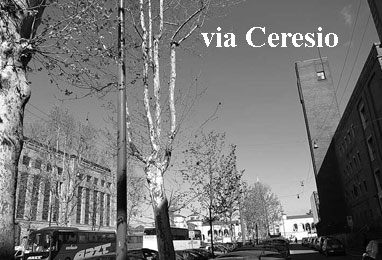 |
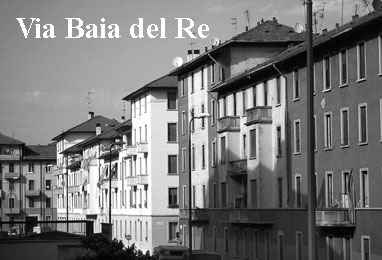 |
via Ceresio
April 25, 1945, the anarchist partisans occupy the local
fascist group (right), and take control of the power plant
(left) ensuring the distribution of energy. In defense of
the building is placed in the middle of a tank pulled away
to the Germans after the war, the former home of the
beam, will host one of the locations of the Libertarian
Communist Federation. |
Via Baia del Re
in this Popular block was located the base of the
detachment of the district. (Along with this, there were
nuclei territorial Affori, Red Church, Taliedo, Porta
Romana, St. Christopher, Pear). |
|
Viale Sabotino 10
Strategic Command illegal Bruzzi-Malatesta. The apartment
present in this building was used for all resistance. In the days
insurgency became the coordinating center for all brigades
Bruzzi-Malatesta. On April 25, in full operation, an accident
occurred unexpectedly. An inexperienced young partisan, left
from accidental gun shot that wounded the commander of the
buttocks and leg Concordia Germinal the political commissar
Mario Mantovani. |
Anarchist resistance in Lombardy
The Brigades 'Bruzzi-Malatesta' named after the revolutionary Errico Malatesta and Pietro Bruzzi, born in the province of Milan in 1888, with a solid experience of political activism behind him, hunted through half of Europe, was a founder of the Milanese anarchist formations. Arrested for possession of the underground press, was shot in February 1945 in San Vittore Olona, in retaliation by the Germans.
The 'Bruzzi-Malatesta' were organized in four brigades (I and II Malatesta, Bruzzi I and II). Despite significant differences in actual (II Bruzzi never exceeded forty partisans), we estimate 665 fighters and supporters between the total force on the eve of liberation. The guerrilla actions took place in Milan and province (and I Bruzzi I Malatesta), in the provinces of Pavia and Lodi (II Malatesta strong 343 effective), in the province of Brescia and in the Venetian Alps (Bruzzi II). At the beginning of April 1945 entered into formations inspired Socialist Matteotti Brigades, while maintaining their operational autonomy and political, in the case of Malatesta II, remains framed in the Garibaldi Division SAP Pavese. On that occasion it was decided an organization with Mario Perelli commanding general, 'Michael' Concord and Germinal 'Luciano' Antonio Pietropaolo military commanders, political commissar Mario Mantovani. The Libertarian Communist was their underground newspaper. In the fight fell a dozen supporters.
Also important was the formation 'Amilcare Cipriani' led by the anarchist who worked in Tarcisio Robbiati Larian triangle. Of course not all the fighters of these formations were anarchists (Malatesta II also includes a priest), as not all anarchists took part in the anarchist resistance in the brigades. Many joined in Matteotti individually (for example, the young courier Giuseppe Pinelli) or in the formations Giustizia e Liberta', at least in the Communist Garibaldi matrix. The Ettore Bonometti and Bortolo Ballarini joined a mixed brigade GL-Garibaldi. Particular case was that of Mazzini-inspired Republican Brigades in Milan had a certain weight. In the twenty-first Brigade Mazzini created a true anarcho-syndicalist current that was D'Annunzio D'Ascola one of the leading figures.

recalling the partisans of the brigades
"Bruzzi - Malatesta"
fell during Resistance
– 1943 –
Brioschi Osvaldo
– 1944 –
Angeli Ugo
Bernini Piero
Favilla Nando
Filini Battista
– 1945 –
Bruzzi Pietro
Camussoni Angelo
Galliani Renato
Imperatrice Amleto
Sbrana Giovanni
Sposini Carlo |
|
translation Enrico Massetti
  
|

